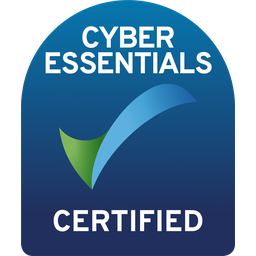Back in the day, the rule of thumb was that customers needed up to nine brand touchpoints before buying a product or service!
Customer touchpoints could be all manner of marketing and sales tools. From a phone call to an email, a TV advert, to a leaflet, it didn’t matter as long as the potential consumers were the right audience for your brand.
These days, with social media and more ways to get in front of your audience, it is safe to assume that a brand has to work much harder to get under the skin of a customer before a relationship turns into one of a seller-buyer.
In this blog, we are going to go through some of the touchpoints that are vital to modern-day businesses. And don’t worry, we’ll cover both what’s important online as well as offline.
As we go through each point, consider how much time you have available to dedicate to carrying out each activity. If time is a luxury you don’t have, think about how much budget you need to set aside to outsource some of these tasks.
“Website is the marketing channel resulting in the best ROI.”
Website
A website is usually the largest marketing project that a business undertakes. Therefore it is crucial to get it right. The look, tone, and information must be relevant to entice your audience to want to know more and keep them coming back.
Getting people to find your website is not an overnight job. It is a long-term, ongoing commitment to your digital presence. Today’s websites are entirely different from those even two years ago. The needs of users have changed. While aesthetics are vital to getting people to take a second look, responsiveness, speed, user experience (UX), and unique regular content are essential to keep them coming back…which segments nicely into…
SEO and Content Marketing:
These two go hand-in-hand; they won’t be as impactful without the other!
A strong brand can only take a business so far if the website doesn’t work correctly. It’s vital to ensure that your website is maintained, refreshed, and regularly updated to keep people (including the search engines) coming back and browsing. It is, after all, one of the main customer touchpoints used!
What should your SEO priorities be?
Click below to expand
Firstly, do your keyword research. There are a bunch of tools out there that offer great insight into monthly search volumes and bid values to help you niche down what you want to be found for.
Once you’ve done this, you should as a minimum ensure each of your pages is optimised with;
- A meta description, ideally 155-160 characters in length
- The headers and copy feature the keyword you researched and settled on and,
- That your images include alt-text containing the keyword (and are titled correctly!)
Outside of this, your content should include internal links to other relevant sources on your website to encourage crawling and to show your further expertise. And make sure that you are ticking off E-E-A-T by adding customer stories wherever possible.
To keep your website fresh and on the search engines’ radars, you need to upload quality content as regularly as possible. We recommend ensuring you have a bank of valuable content covering the basics and then move to at least one wonderfully written and researched piece a month. Less is more these days.
So what should you consider in your content marketing efforts?
Businesses need to be producing engaging content that can be shared to draw in visitors. Content could be videos, blogs, reviews, case studies, etc., and they all need to be scheduled, written/filmed well, optimised, published and shared.
But it’s not just about the above; there are plenty of other customer touchpoints you can add to your site that are not only informative and useful to current customers, but also allow the perfect opportunity for a bit of lead gen.
We’re talking lookbooks, brochures and whitepapers.
Add them as free resources either for all to see or use them as an opportunity to capture email addresses and obtain those qualified leads. After all, if 71% of B2B buyers have used a whitepaper as part of their decision-making process in the last year or so, they must pull some weight!
TIPS FOR SEO + CONTENT
Let’s face facts; some businesses have started abusing email communications. Inboxes of customers are full of ‘sales’ messages on a daily basis, so what are you going to do to stand out and not get ignored?
The first thing to think about is the content you plan to share. Will the reader care? Will that encourage them the take action? Then make sure that the subject is so compelling that people click rather than delete.
There is an argument for and against personalising emails. Making the reader feel special can help them have a deeper connection with your business. Then again, do customers really believe that you have sat down and penned them a personalised email? Everyone is different, so do some research, segment, test and evolve.
TIP!
Make sure that the topic isn’t misleading; this will be a one-way ticket to the junk folder or, worse, being reported as spam!
“Marketers who use segmented campaigns note as much as a 760% increase in revenue.”
Online PR
As an expert in your field, you may be able to contribute your knowledge via online publications or as a guest blogger on well-known sites. Seek out opportunities, sign up for a press office service or ‘pitch’ your expertise; all PR is good PR!
Also, keep an eye out for #journorequests on Twitter; these often have opportunities for businesses to get into the media (on and offline) without having to do too much legwork.
Regardless of what you do, make sure that you research where the article will end up. For example, if a website has poor ‘domain authority’ (DA) links to your site, it may do your online marketing efforts more harm than good. Also, make sure you ask how many unique visits they get per month, how they push your content, and the stats once the piece has been out for a few weeks.
Print PR
A great PR campaign tells your story, educates the reader, and helps make your brand recognisable and generate loyalty and trust.
Publicity is an integral part of the sales and marketing process because it can be the most persuasive and often as cost-effective as SEO.
Although many people think that ‘print is dead’, the niche magazine industry still holds its own. Getting your business into relevant industry specialist publications can be just as effective (if not more so) than getting yourself into newspapers.
Social Media
If your business isn’t harnessing the power of social media, you need to take a serious look at why!
You don’t have to be everywhere—research where your target audience is. Find where your competitors are. See if your website is already getting traffic from any sources, then ensure that you have a consistent professional presence. Over 56 million people in the UK alone have active social media accounts and spend on average 143 mins per day on these networks.
How are you going to make sure that some of that time is spent interacting with your brand?
Choose your platform wisely and look at your brand identity to put together some guidelines on how you want to be perceived and what content you will share.
PPC & SEM
There are many other ways of advertising your business online. Social advertising allows you to promote your business on social media platforms with laser focus targeting.
AdWords, and other search engine advertising, is another area businesses often depend on to generate website traffic. These are adverts created via Google to allow your site to jump ahead of the queue for selected search terms and keywords. But it isn’t as easy as that. Your on-site SEO and off-site SEM (Search Engine Marketing) need to come together if you don’t want to pay through the nose for bids and want conversions.
In most instances, you have the option to display your advert on third-party websites. This is why you see that item you have been umming and erring over pop up wherever you go. Clever, hey! It is all based on your search history and those tasty cookies tracking your every move online.
DID YOU KNOW?
Social media platforms recently overtook Paid Search as an advertising channel, showing growth of 25% YoY.
Broadcast Advertising
This method is traditionally radio or TV, but podcasts are fast becoming a preferred medium.
Radio still plays a central role in people’s lives, and TV is more in demand today than ever. We suggest you do your research and maybe try other routes to your customer’s homes before looking at broadcast advertising.
A quick look at those ad spend figures:
Click below to expand
TV ad spend has continued to rise, reaching £5.46bn in 2022, and set to grow another 7%
Podcast ad spend reached £46m with 19m listeners tuning in from the UK
After a resurgence following a dip during the pandemic, UK radio ad spend reached £718m after a dip to a mere £577m…
Print Marketing & Promotional Items
It’s good to give your customers something physical to keep, and it makes your brand easily recognisable and memorable. Business cards, leaflets, print advertising, direct mail or promotional items are all customer touchpoints that fall within print marketing, and it’s what your business needs to leave a lasting effect on your customers.
Remember to think about how much budget you’ll have available for offline marketing. “Are you willing to spend up to £500? £1,000? £10,000? More? Having this in your back pocket will allow your negotiations to be as transparent as possible,” advise print marketing experts Clone Media.
TIP!
Consider just putting your phone number, website and email address on your business card. The likelihood of these details changing is slimmer than your business address, especially now with hybrid working and downsizing office spaces.
Also, think about:
- Who will you be providing print materials to? Are you going to send them to a specific audience or simply hand them out to anyone? Consider the costs of printing before giving them to strangers on the street. You want to spend money to get results. Otherwise, it is a waste of your time and budget.
- How many people do you want to reach? It’s good to have a number in mind when going to print, you don’t want to get stuck with a mass of spare leaflets, but you also don’t want to run out of business cards! For this reason, considering a direct marketing campaign may be the most cost-effective way to do this as you can target pacific demographics rather than just anyone and everyone and hoping for the best!
Affiliate Marketing & Joint Ventures
Getting involved with a complementary business can be a cost-effective way of promoting your business to another brand’s audience. While we could (and probably will) write a whole blog on how to go about this, the premise is that you work with another business to promote each other.
Typical examples are:
- Food or beauty products that are sold as part of a hamper via another business. The hamper business promotes the products in that hampers giving product extra exposure to a new audience.
- Competitions are also standard. A shop like Tesco may advertise an in-store offer on Nivea suncream and incorporate a coupon or discount code for this product. Tesco has paid for (the majority) of the advertising campaign, and Nivea would get an indirect endorsement from Tesco.
Did you know? 1 IN 50 DEALS are struck at that first meeting.
Human Contact
You cannot deny that talking to people is the best way to convey what you can do for them. However, getting to the point where they listen can be tricky. Cold calling is for people with thick skin, and there is a knack to getting people to commit to a meeting (or a sale) on the first contact. So building a robust database and emailing those that have opted in or you have previous contact with is a safer way to invite a conversation.
You cannot deny that talking to people is the best way to convey what you can do for them. However, getting to the point where they listen can be tricky. Cold calling is for people with thick skin, and there is a knack to getting people to commit to a meeting (or a sale) on the first contact. So building a robust database and emailing those that have opted in or you have previous contact with is a safer way to invite a conversation.
Presenting at conferences, networking meetings, and business expos are a ‘warmer’ way to get in front of people. Just make sure, whatever contacts you make, you follow them up. We recommend not to leave it longer than five working days if you want to make a lasting impression on someone you’ve met.
Points to Consider
- Your team's expertise vs outsourcing to specialists
- Resources available
- How you want your brand to be perceived
- Time available to dedicate to these activities
- Your audience and their habits
Are you leaking leads?</b?
Hopefully, this article has given you a lot to think about and spurred you to take action. But if you’ve got too many customer touchpoints to keep on top of, answer our 21 quick questions to discover where you’re dropping leads with our Lead Leak Gap Analysis.






